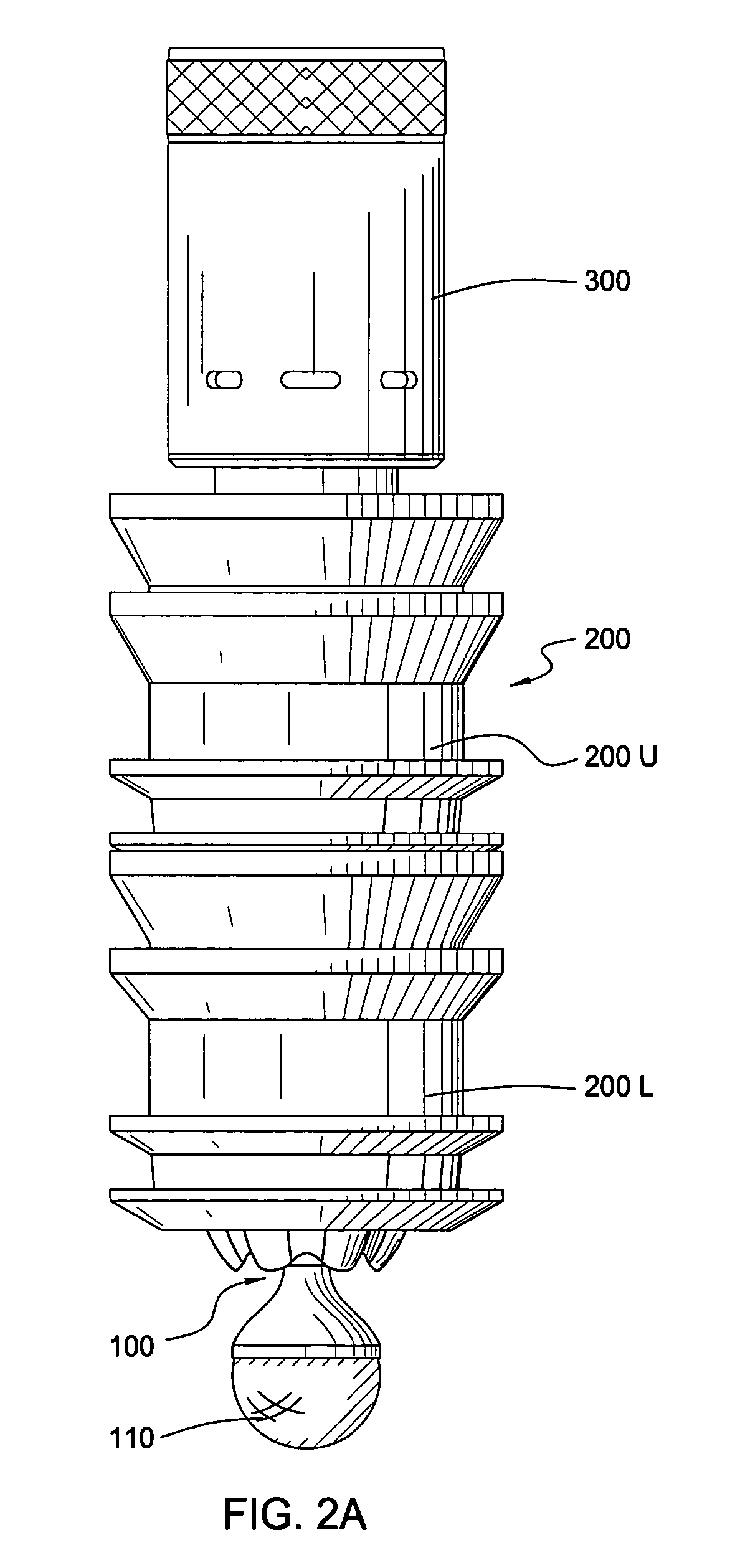Apparatus for releasing a ball into a wellbore
a technology for dropping balls and wellbores, which is applied in the direction of wellbore/well accessories, fluid removal, sealing/packing, etc., can solve the problems of reducing the size of the mandrel within the plug, causing the disk within the bottom plug to burst, and limiting the size of the mandrel
- Summary
- Abstract
- Description
- Claims
- Application Information
AI Technical Summary
Benefits of technology
Problems solved by technology
Method used
Image
Examples
Embodiment Construction
[0039]FIG. 1A presents a perspective view of a ball-releasing apparatus 100, in one embodiment, of the present invention. The ball-releasing apparatus 100 provides a novel mechanism for selectively releasing a larger ball 110 into a wellbore from a point below a wellbore restriction. The larger ball 110 is shown releasably attached to the ball-releasing apparatus 100. FIG. 1B is a cross-sectional view of the ball-releasing apparatus 100 of FIG. 1A. FIG. 1C is a top, cross-sectional view taken across line C—C of FIG. 1B.
[0040]The ball-releasing apparatus 100 first comprises a tubular body 105. The body 105 is configured and dimensioned to be received at the lower end of a mandrel within a wellbore tool (not shown in FIGS. 1A–1C). Preferably, the upper end of the body 105 has external threads 106 that allow the ball-releasing mechanism 100 to be quickly and simply screwed into the lower end of the mandrel.
[0041]An example of a wellbore tool 200 for receiving the ball-releasing apparat...
PUM
 Login to View More
Login to View More Abstract
Description
Claims
Application Information
 Login to View More
Login to View More - R&D
- Intellectual Property
- Life Sciences
- Materials
- Tech Scout
- Unparalleled Data Quality
- Higher Quality Content
- 60% Fewer Hallucinations
Browse by: Latest US Patents, China's latest patents, Technical Efficacy Thesaurus, Application Domain, Technology Topic, Popular Technical Reports.
© 2025 PatSnap. All rights reserved.Legal|Privacy policy|Modern Slavery Act Transparency Statement|Sitemap|About US| Contact US: help@patsnap.com



